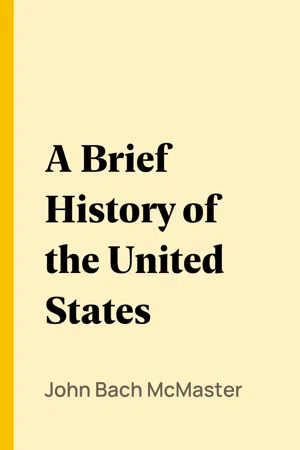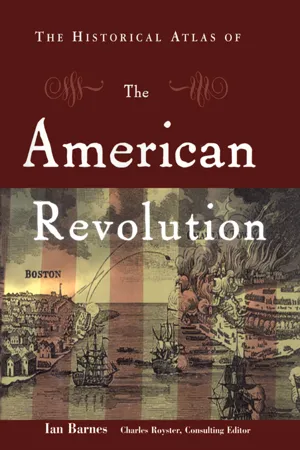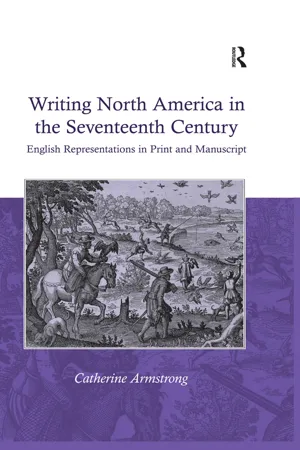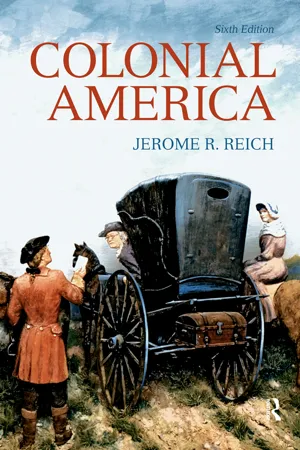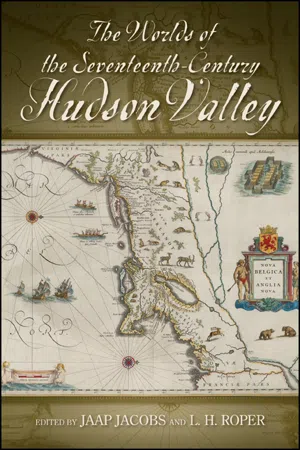History
New England Colonies
The New England Colonies were a group of English colonies in North America, including Massachusetts, Connecticut, Rhode Island, and New Hampshire. These colonies were known for their Puritan religious beliefs, fishing and shipbuilding industries, and a focus on education. They played a significant role in the early history of the United States and were characterized by a strong emphasis on self-government and individual freedoms.
Written by Perlego with AI-assistance
Related key terms
Related key terms
1 of 4
Related key terms
1 of 3
9 Key excerpts on "New England Colonies"
- eBook - ePub
- John Bach McMaster(Author)
- 2004(Publication Date)
- Perlego(Publisher)
5. Other religious disputes led to the migration of people who settled (1635-36) in the Connecticut valley and founded (1639) Connecticut. 6. Between 1638 and 1640 other towns were planted on Long Island Sound, and four of them united (1643) and formed the New Haven Colony. 7. Massachusetts, Plymouth, Connecticut, and New Haven joined in a league —the United Colonies of New England (1643-84).8. New Haven was united with Connecticut (1662), and Plymouth with Massachusetts (1691), while New Hampshire was made a separate province; so that after 1691 the New England Colonies were New Hampshire, Massachusetts, Rhode Island, and Connecticut.9. The New England colonists lived largely in villages. They were engaged in farming, manufacturing, and commerce.10. For twenty years, during the Civil War and the Puritan rule in England, the colonies were left to themselves; but in 1660 Charles II became king of England, and a new era began in colonial affairs.[Illustration: THE CHARTER OAK, HARTFORD, CONN. From an old print.]FOOTNOTES
[1] On his map Smith gave to Cape Ann, Cape Elizabeth, Charles River, and Plymouth the names they still retain. Cape Cod he called Cape James.[2] The Puritans were important in history for many years. Most of the English people who quarreled and fought with King James and King Charles were Puritans. In Maryland it was a Puritan army that for a time overthrew Lord Baltimore's government (p. 52).[3] Read Fiske's Beginnings of New England, pp. 79-82.[4] The little boat or shallop in which they intended to sail along the coast needed to be repaired, and two weeks passed before it was ready. Meantime a party protected by steel caps and corselets went ashore to explore the country. A few Indians were seen in the distance, but they fled as the Pilgrims approached. In the ruins of a hut were found some corn and an iron kettle that had once belonged to a European ship. The corn they carried away in the kettle, to use as seed in the spring. Other exploring parties, after trips in the shallop, pushed on over hills and through valleys covered deep with snow, and found more deserted houses, corn, and many graves; for a pestilence had lately swept off the Indian population. On the last exploring voyage, the waves ran so high that the rudder was carried away and the explorers steered with an oar. As night came on, all sail was spread in hope of reaching shore before dark, but the mast broke and the sail went overboard. However, they floated to an island where they landed and spent the night. On the second day after, Monday, December 21, the explorers reached the mainland. On the beach, half in sand and half in water, was a large bowlder, and on this famous Plymouth Rock, it is said, the men stepped as they went ashore. - eBook - ePub
- Ian Barnes, Charles Royster, Charles Royster(Authors)
- 2014(Publication Date)
- Routledge(Publisher)
Upon his restoration in 1660, King Charles II took very little interest in the colonies but his successor, brother James II (1685–88) wished to impose his style of overt control on British colonies, which led to immense resentment. The reign of William and Mary next sought to eradicate maladministration and chaos, and attempted to incrementally reduce the privileges acquired in the previous royal charters. Under Charles II, Connecticut was granted a charter in 1664 and Rhode Island and Providence in 1663, with minor adjustments to the area of Connecticut (plus New Haven, 1664). The year 1684 witnessed the annulment of the Massachusetts Charter after London traders claimed that the colony was ultra vires in the use of its terms. In fact, the late seventeenth century had seen most American colonists exercising much local autonomy. Town meetings in New England handled local affairs and these were attended by most free male adult residents. Elected selectmen in the north and judges of the country court in the Chesapeake ran daily affairs. The New England Colonies were virtually independent politically, being outside real proprietorial or royal control. Furthermore, voting was based on a property qualification and a large proportion of males possessed the franchise even if they did not use it; estimates suggest that between 50 percent to 80 percent of adult white males had a vote. Hence, the growth of democracy in America was much in advance of England where most men were tenant-farmers or agricultural wage labourers with no hope of a voice in local political or economic affairs.Such liberal developments in America were anathema to James II. The Navigation Acts were more vigorously enforced on the assumption that New England was a snakepit full of smugglers. To impose greater authority, James established the Dominion of New England, comprising NewYork, New England, and New Jersey. The assemblies were dissolved by Governor Andros, but he needed the consent of a nominated council to make laws and collect taxes. However, the Glorious Revolution of 1688 led by William of Orange and his wife, Mary, daughter of James, overthrew this autocratic Stuart who had incensed parliament by levying taxes without its sanction. New Englanders, New Yorkers, and Marylanders overthrew their hated government, but the new monarchs wanted to enforce strict authority. Massachusetts became a royal colony, like many other provinces, with a governor and court; legislation could be vetoed by the former, but the franchise was also extended. Pennsylvania’s 1701 Charter granted the lower house all legislative power, the council being appointive and advisory. Hence, despite royal interference, large measures of liberal and democratic development did exist with a strong legacy of self-rule and this situation was helped by the nature of British government. A whole range of institutions muddled and conflicted with each other, such as the Board of Trade and Plantations, which could evaluate colonial legislation and advise governments but had no real power. A variety of governors, assemblies, the customs service, and ministers for the colonies, together with army garrison commanders, all had their say. Thus, gentlemanly bedlam, decentralization, and calculated forgetfulness allowed the colonies to flourish. However, these soon faced the expense of costly Franco-British colonial wars in the Americas. - eBook - ePub
The Making of Urban America
A History of City Planning in the United States
- John William Reps(Author)
- 2021(Publication Date)
- Princeton University Press(Publisher)
CHAPTER 5
New Towns in a New England
DURING the first two decades of the seventeenth century virtually all of the European powers that were to contend for supremacy in North America were active in colonization and the planning of towns. The French at Isle Sainte Croix, Port Royal, and Quebec began to stake out an empire that would ultimately include Canada and the Mississippi Valley. In the southwest the Spanish, thrusting northwards from secure bases in Mexico, established a new outpost at Santa Fé in 1609. Along the majestic Hudson the Dutch founded their short-lived colony with forts at Albany in 1614 and Kingston in 1615, preceding the settlement on Manhattan Island by ten years. The English finally gained a precarious grasp on the New World, after a number of failures, with the founding of Jamestown in 1607.New England was not neglected. The Plymouth Company, the group of merchants granted settlement rights in northern “Virginia,” was initially as active as the London Company, which settled at Jamestown. The leaders of this northern group, Sir John Popham and Sir Ferdinando Gorges, organized an expedition that set out from Plymouth in May 1607. Two months later the two ships carrying 100 would-be colonists arrived off the coast of Maine. At the mouth of the Kennebeck River, according to a contemporary account,“They all went ashore, and there made choise of a place for their plantation, at the mouth or entry of the river on the west side (For the river bendeth itself towards the nor-east, and by east), being almost an island, of a good bigness. . . .”1The work of fortifying the point and building dwellings for the winter began immediately. Within a few weeks, if our informant can be believed, they had “full finished the fort, trencht and fortefied yt with twelve pieces of ordinaunce, and built fifty howses therein, besides a church and a storehowse. . . .”The plan of the settlement, called St. George, was sent back to England in October. This drawing is reproduced in Figure 66 - eBook - ePub
- Daniel Webster, Andrew Jackson George, (Authors)
- 2005(Publication Date)
- Perlego(Publisher)
It would far exceed the limits of this discourse even to mention the principal events in the civil and political history of New England during the century; the more so, as for the last half of the period that history has, most happily, been closely interwoven with the general history of the United States. New England bore an honorable part in the wars which took place between England and France. The capture of Louisburg gave her a character for military achievement; and in the war which terminated with the peace of 1763, her exertions on the frontiers were of most essential service, as well to the mother country as to all the Colonies.In New England the war of the Revolution commenced. I address those who remember the memorable 19th of April, 1775; who shortly after saw the burning spires of Charlestown; who beheld the deeds of Prescott, and heard the voice of Putnam amidst the storm of war, and saw the generous Warren fall, the first distinguished victim in the cause of liberty. It would be superfluous to say, that no portion of the country did more than the States of New England to bring the Revolutionary struggle to a successful issue. It is scarcely less to her credit, that she saw early the necessity of a closer union of the States, and gave an efficient and indispensable aid to the establishment and organization of the Federal government.Perhaps we might safely say, that a new spirit and a new excitement began to exist here about the middle of the last century. To whatever causes it may be imputed, there seems then to have commenced a more rapid improvement. The Colonies had attracted more of the attention of the mother country, and some renown in arms had been acquired. Lord Chatham was the first English minister who attached high importance to these possessions of the crown, and who foresaw any thing of their future growth and extension. His opinion was, that the great rival of England was chiefly to be feared as a maritime and commercial power, and to drive her out of North America and deprive her of her West Indian possessions was a leading object in his policy. He dwelt often on the fisheries, as nurseries for British seamen, and the colonial trade, as furnishing them employment. The war, conducted by him with so much vigor, terminated in a peace, by which Canada was ceded to England. The effect of this was immediately visible in the New England Colonies; for, the fear of Indian hostilities on the frontiers being now happily removed, settlements went on with an activity before that time altogether unprecedented, and public affairs wore a new and encouraging aspect. Shortly after this fortunate termination of the French war, the interesting topics connected with the taxation of America by the British Parliament began to be discussed, and the attention and all the faculties of the people drawn towards them. There is perhaps no portion of our history more full of interest than the period from 1760 to the actual commencement of the war. The progress of opinion in this period, though less known, is not less important than the progress of arms afterwards. Nothing deserves more consideration than those events and discussions which affected the public sentiment and settled the Revolution in men's minds, before hostilities openly broke out. - eBook - ePub
Writing North America in the Seventeenth Century
English Representations in Print and Manuscript
- Catherine Armstrong(Author)
- 2016(Publication Date)
- Routledge(Publisher)
Chapter 7Representations of English Society in New England: Intentions and RealitiesThe writings produced by the settlers of New England in the first half of the seventeenth century show that they were attempting to build a new religious society, based on their idea of godly discipline and freedom to worship, exiled from a repressive English Church. While this picture is broadly true, other factors driving the development of the settlements have to be acknowledged, and differences between the New England Colonies, their origins and aims, must be recognized.Creating a New Society
The original plan for settling New England was underscored by purely economic motives. Simultaneously with the foundation of the Virginia Company, a sister company, primarily made up of West Country merchants was formed with the aim of establishing a trading colony in New England. It was intended that the colonists be self-sufficient in order to keep trading costs to a minimum. However, the company did not last long because most of the merchants bought themselves out in order to pursue more lucrative ventures elsewhere.1 It was only in 1628 when very different groups of migrants showed an interest in New England that the idea of a permanent settlement became truly viable. Charles I did not want to become personally involved in the colony, so by chartering a joint stock company he created the political framework for the settlement of New England. The religious migrants bought out the former non-Puritan founders of the Dorchester Company and elected John Winthrop as governor in the summer of 1629.However, another group of Englishmen dissatisfied with the development of the Church under the Stuarts preceded the Puritans into the New England region. The Plymouth Pilgrims, who never received a land grant or patent from the English authorities, saw themselves as wholly separate from the Church of England, having endured years of exile in Holland before coming to America, while the Puritans of Massachusetts Bay, whose colony was officially recognized, hoped to remain within a reformed established Church, once its attachment to the vestiges of popery had been severed. In fact the Massachusetts settlers, while attempting to remove separatists from their colony, constantly had to defend themselves against accusations of separatism from England. This sort of attack is exemplified by Peter Heylyn’s four-volume Cosmographie , in which he accused New Englanders of being ‘Brownists and Puritans’, the Brownists being a group of dissidents from the Church of England who attempted to settle in North America in the 1590s. Separatists were clearly not welcome in Massachusetts; Roger Williams was exiled to Rhode Island because he thought people should repent for communing within the Church of England. The Reverend John White claimed that the strong magistracy in Massachusetts would lead residents away from such a path. It must also be noted that ‘Puritanism’ itself is not an unchanging entity and is, in fact, a controversial term in English historiography, although historians of early America seem to use it with impunity. There are a few exceptions to this, such as Stephen Foster, who acknowledges the mutable nature of Puritanism throughout the sixteenth and seventeenth centuries.2 - eBook - ePub
- Sarah Hull(Author)
- 0(Publication Date)
- Rough Guides(Publisher)
Contexts
History >> New England on film >> Books >>CONTEXTS
HISTORY
New England has been inhabited by humans for at least ten thousand years, though little is known about its earliest peoples. By the time Europeans started arriving in the region it was populated by an estimated 100,000 Algonquian-speaking Native Americans, including the Abenaki, Narragansett, Niantic, Penobscot, Pequot, Wampanoag and many others. Columbus may have “discovered” America in 1492, but it’s often forgotten that European colonization of North America didn’t get going for another 120 years. During that time seasonal cod fishermen from England and Spain sometimes visited the New England coast (especially up in Maine), and in 1524 Giovanni da Verrazzano met local Native American sachems (leaders) at Narragansett Bay, Rhode Island, but no attempt was made at permanent settlement.The Pilgrims
The permanent European settlement of New England began with the establishment of Plymouth (or “Plimoth”), by the English Pilgrims in 1620. The settlers were a motley bunch of religious separatists known as Puritans, exiles from England, plus hired help such as Myles Standish, professional soldier, and John Alden, cooper. In all, just over one hundred passengers set sail aboard the Mayflower from Southampton, England, on September 16, 1620. After two months at sea, they reached the North American coast at Provincetown, Cape Cod, on November 19. The same day, 41 men signed the Mayflower Compact, in which they agreed to establish a “Civic Body Politic” (temporary government) and to be bound by its laws. The Compact became the basis of government in the Plymouth Colony.The new arrivals had landed on a virtually barren stretch of the coast, and soon resettled across the bay, arriving at what is now Plymouth, Massachusetts, on December 26, 1620. Only half the colonists survived their first winter on American soil. Unaccustomed to the extreme cold, many died from pneumonia; scurvy and other infections killed many more. It would have been even worse but for Squanto (see The age of exploration and disease ), a Native American who had spent time in England. He managed to enlist the support of Massasoit, the local Wampanoag sachem , who signed a Treaty of Friendship, and plied the visitors with food (in part because he wanted their help dealing with a rival tribe, the Narragansett). Exactly a year after their arrival in Plymouth, the surviving colonists sat down with the Wampanoag to enjoy a feast – an occasion still celebrated in America today, at the end of November, as Thanksgiving - eBook - ePub
- Jerome Reich(Author)
- 2016(Publication Date)
- Routledge(Publisher)
7 The New England Colonies“So God brought me out of Plymouth and landed me at Nantassret. Blessed be God!” As may be inferred from this typical immigrant’s statement, religion was the primary—though not exclusive—motive for the settlement and expansion of New England. This chapter surveys the religious, political, and economic development of New England and its often clashing relationships with the Native American inhabitants.The Founding of the Plymouth Colony
In England, Separatists were punished by fines and imprisonment. The members of a small Separatist congregation at Scrooby in Yorkshire, tired of being “clapt up in prison,” left England in 1608 for Holland and religious freedom. It was this congregation of ordinary farm workers—led by William Bradford and their minister, John Robinson—whom we know as the Pilgrims. Although the Pilgrims found religious freedom in Holland, they faced difficult economic conditions, the assimilation of Dutch customs by their children and the possibility of involvement in a war between Holland and Spain that threatened to break out in 1621. Therefore, a group of them decided—in spite of the perils involved—to settle in the New World.In 1620, after much negotiation, the London Company gave the Pilgrims permission to settle on its territory. To help with finances, a merchant named Thomas Weston formed a joint stock company which raised the funds necessary to transport them to America. Each colonist was given one share in the company and was expected to work for the company for seven years. At the end of that period, all the land and profits were to be divided between the colonists and the other investors in the company. Thirty-five Pilgrims and sixty-seven other English men, women, and children boarded the Mayflower when it sailed for America in September 1620.The voyage lasted slightly over two months. Whether because storms blew them off course; or because the Pilgrims were attracted by John Smith’s account of the furs, fish, and timber in New England; or because they felt they would be freer to worship as they pleased outside the jurisdiction of the London Company, the Pilgrims landed on Cape Cod (not Plymouth Rock) instead of Virginia. This created a problem: How, and by whom, were they to be ruled? The solution to this problem was the famous Mayflower Compact, in which forty-one of the adult males agreed to - Jaap Jacobs, L. H. Roper, Jaap Jacobs, L. H. Roper(Authors)
- 2014(Publication Date)
- Excelsior Editions(Publisher)
63 ConclusionIf Massachusetts and more specifically Boston remained the political and demographic center of gravity (as the main port of entry and the most populous town of the region), the Connecticut Valley was becoming more and more populated and was the object of conflicting claims: of rival Native tribes (Pequot, Mohegan, Narragansett, Sequin), whose “loyalties and allegiances” were “rather fluid,” of the Dutch who had invited the Plymouth English but now regretted it, and of the Plymouth settlers who were being expelled by the Massachusetts emigrants, even though they had been there first.64 The Dutch (or at least some of them) explained their failure to keep the English out of what they considered as their land along the “Fresh” River by their failure to “populate” it. This was confirmed by the English: in 1639, John Haynes, then governor of Connecticut, explained to one Dutch guest that “the lands were lying idle” and that it was “a sin to let such rich land … lie uncultivated,” therefore using, in his turn, the Genesis 1:28 argument.65The period from the Treaty of Hartford (1638) to the outbreak of the First Anglo-Dutch War (1652) was both a period of peace between the Netherlands and England in Europe and one of tension between the Dutch and the English in America.66 Four English (puritan) colonies—Massachusetts, Connecticut, New Haven and Plymouth—decided to confront the Dutch-Indian threats upon them by creating a defensive confederation in 1643. The English from Connecticut and New Haven kept encroaching upon Long Island, making its eastern part more and more English, whereas the Dutch had not given up their title to Connecticut, especially after Petrus Stuyvesant became director-general of New Netherland in 1647. Finally, a treaty was signed, again at Hartford, in 1650, putting a temporary end to the disputes.67 However, two years later, the beginning of the First Anglo-Dutch War renewed hostilities, or rather rekindled the fear of Dutch attacks, whether or not in combination with the Indians, especially among the New Haven and Connecticut settlers, who were more exposed. As the Massachusetts authorities did not hark to their calls for preemptive war, the New Haven general court, feeling betrayed by their brethren and testing the limits of the United Colonies, decided to call the Lord Protector to the rescue.68- eBook - ePub
Narrative and Critical History of America, Vol. 3 (of 8)
English Explorations and Settlements in North America 1497-1689
- (Author)
- 2016(Publication Date)
- Perlego(Publisher)
CHAPTER IX.
NEW ENGLAND. BY CHARLES DEANE, LL. D.,Vice-President of the Massachusetts Historical Society.The Council for New England. —This body was incorporated in the eighteenth year of the reign of James I., on the 3d of November, 1620, under the name of the “Council established at Plymouth, in the County of Devon, for the planting, ruling, ordering, and governing of New England, in America.” The corporation consisted of forty patentees, the most of whom were persons of distinction: thirteen were peers, some of the highest rank. The patentees were empowered to hold territory in America extending from the fortieth to the forty-eighth degree of north latitude, and westward from the Atlantic to the Pacific, and they were authorized to settle and govern the same. This charter is the foundation of most of the grants which were afterward made of the territory of New England.This Company was substantially a reincorporation of the adventurers or associates of the Northern Colony of Virginia, with additional privileges, placing them on a footing with their rivals of the Southern Colony, whose franchise had been twice enlarged since the issuing of the original charter of April 10, 1606, which incorporated both companies. A notice of this earlier enterprise will but briefly detain us.While the Southern Colony had attracted the wealth and influence of leading adventurers who represented the more liberal party in the government, and were enabled to prosecute their plans of colonization with vigor to a good degree of success, the Northern Colony had signally failed from the beginning. The former had established at Jamestown, in 1607, the first permanent English Colony in America. The latter produced no greater results than the abortive settlement at Sabino, known as the Popham Colony.[522] The discouragement following upon its abandonment prompted the withdrawal of many of the adventurers, though the organization of the patentees still survived; but of their meetings and records we have no trace. Sir Ferdinando Gorges himself would not despair, but engaged his private fortune in fishing, trading, and exploring expeditions, and in making attempts at settlement. Many of these enterprises he speaks of as private ventures, while the Council for New England, in their Briefe Relation
Index pages curate the most relevant extracts from our library of academic textbooks. They’ve been created using an in-house natural language model (NLM), each adding context and meaning to key research topics.
Explore more topic indexes
Explore more topic indexes
1 of 6
Explore more topic indexes
1 of 4
